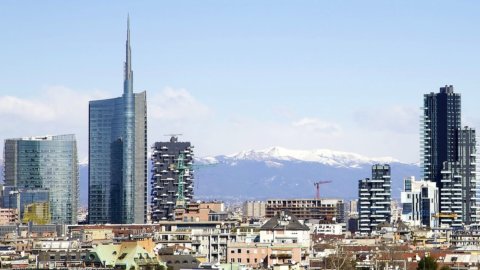Milan is the smartest city in Italy, Florence and Bologna follow in second and third place, Rome does not enter the Top Ten and stops at 15th place. The Lombard capital brings home the record for the fifth consecutive year especially in terms of economic solidity, research and innovation, work, tourist-cultural attractiveness.
Florence brings excellent results in terms of tourist-cultural attractiveness and digital transformation - for which it is first - and ranks among the first cities for sustainable mobility, economic stability, education, work, civil participation and energy.
Bologna, on the other hand, confirms its leadership in the areas of work, energy and governance and civil participation and earns an excellent positioning for digital transformation, education, research and innovation and social inclusion.
This is the podium according to the ICity Rate 2018 annual report promoted by the Public Administration Forum to update the evolution of Italian cities on the path towards the creation of smarter cities, closer to the needs of citizens, more inclusive, livable and capable of adapting to changes taking place.
The urban dimensions on which the report is based are 15 and hold together 107 indicators which, aggregated in the final ICity index, make it possible to draw up the final ranking of the Italian capital municipalities, since it has become essential to design and govern intelligent cities without taking into account of the sustainability objectives introduced by the UN Agenda 2030.
"The three cities at the top of ICity Rate 2018 follow a very different model of development and urban governance, but capable of bringing good results in many of the dimensions analyzed by the research", he says Gianni Dominici, general manager of FPA .
The centre-north is the flagship of the peninsula according to the report: Trento, Bergamo, Turin, Venice, Parma, Pisa and Reggio Emilia complete the ranking of the top ten Italian smart cities. A group in which a strong block of medium-sized cities emerges with excellent performance, such as Trento, which gains a position thanks to good results in waste management; Bergamo, which moved from sixth to fifth place and stands out in particular for economic solidity and management of urban green areas; Parma, first for social inclusion and land and territory consumption, and Pisa, excellence in education.
The capital of Italy is slowly continuing its approach to the top ten sustainable cities in Italy, recovering two positions compared to 2017, rising to 15th place, thanks above all to good performances in the areas of digital transformation, tourism and culture, innovation and instruction. In addition to these positive results, the capital has also climbed positions in the areas of sustainable mobility, employment and governance and civil participation. However, it still lags behind in aspects that should characterize large cities: 43rd in energy and 43rd in economic soundness.
The results relating to southern Italy are disappointing: it is necessary to scroll the ranking up to 43rd place to find the first city in the south and there is Cagliari, which gains four positions compared to 2017. The city of Lecce performed well, which, 62nd, gains nine positions on the previous year.
Within the high end of the ranking, there are some medium or small-sized cities – all under 100 inhabitants – who recorded the most significant progress: Pordenone, Cremona, Udine, Treviso, Biella, Lodi and Belluno. Some of these realities are characterized by the excellent performance obtained in research and innovation thanks also to the establishment, in the capital or in the province, of places of concentration and promotion of productive innovation.
This feature is often accompanied by that of high levels of security (Pordenone, Udine and Biella are among the top ten in the sector index), good levels of social inclusion (particularly in Udine and Pordenone) and good waste management (Treviso, Belluno and Pordenone are among the top ten in the scope index).
Cremona is placed in the group thanks also to the results obtained in digital transformation, sustainable mobility and energy and Lodi also obtains a good placement in the indicator relating to urban green areas.
Bottom line from worst to best made up of Agrigento, preceded by Vibo Valentia, Caltanissetta, Trapani, Crotone, Taranto, Enna, Brindisi, Caserta and Benevento.




